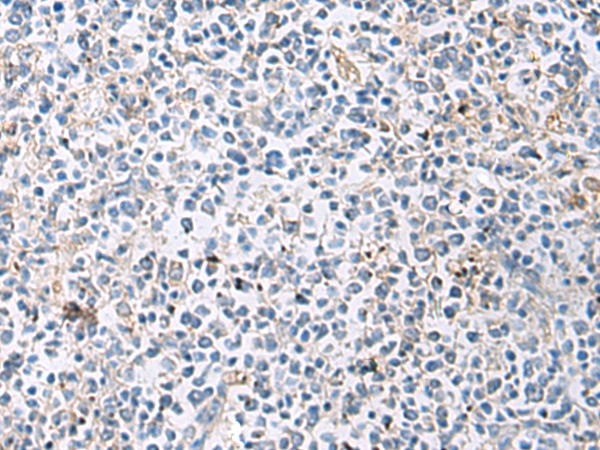| 货号: S215494 |
| 产品全名: CHRND 兔多抗 |
| 基因符号 ACHRD; CMS2A; CMS3A; CMS3B; CMS3C; FCCMS; SCCMS |
| UNIPROT ID: Q07001 (Gene Accession – NP_000742 ) |
| 背景: The acetylcholine receptor of muscle has 5 subunits of 4 different types: 2 alpha and 1 each of beta, gamma and delta subunits. After acetylcholine binding, the receptor undergoes an extensive conformation change that affects all subunits and leads to opening of an ion-conducting channel across the plasma membrane. Defects in this gene are a cause of multiple pterygium syndrome lethal type (MUPSL), congenital myasthenic syndrome slow-channel type (SCCMS), and congenital myasthenic syndrome fast-channel type (FCCMS). Several transcript variants encoding different isoforms have been found for this gene. |
| 抗原: Synthetic peptide of human CHRND |
| 经过测试的应用: ELISA, IHC |
| 推荐稀释比: IHC: 25-50; ELISA: 5000-10000 |
| 种属反应性: Rabbit |
| 克隆性: Rabbit Polyclonal |
| 亚型: Immunogen-specific rabbit IgG |
| 纯化: Antigen affinity purification |
| 种属反应性: Human |
| 成分: PBS (without Mg2+ and Ca2+), pH 7.4, 150 mM NaCl, 0.05% Sodium Azide and 40% glycerol |
| 研究领域: Neuroscience |
| 储存和运输: Store at -20°C. Avoid repeated freezing and thawing |

Immunohistochemistry analysis of paraffin embedded Human liver cancer tissue using 215494(CHRND Antibody) at a dilution of 1/25(Cytoplasm). | 
In comparision with the IHC on the left, the same paraffin-embedded Human liver cancer tissue is first treated with the synthetic peptide and then with 215494(Anti-CHRND Antibody) at dilution 1/25. | 
The image on the left is immunohistochemistry of paraffin-embedded Human tonsil tissue using 215494(Anti-CHRND Antibody) at a dilution of 1/25. | 
In comparision with the IHC on the left, the same paraffin-embedded Human tonsil tissue is first treated with synthetic peptide and then with D163454(Anti-CHRND Antibody) at dilution 1/25. |
|






